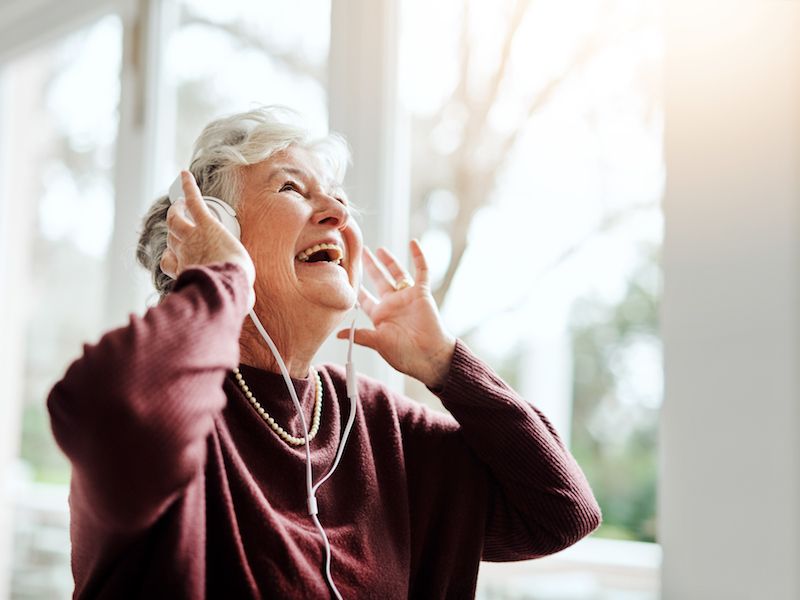
People who work in loud surroundings such as construction sites or at heavy metal concerts are not the only people affected by noise related loss of hearing. It doesn’t even have to be work-related, leisure-related noise exposure can be harmful, also. What type of exposure are we discussing? Music, gaming, streaming video or anything else that you would listen to through earbuds or headphones.
You might be surprised to learn that a mobile device can go that loud. But these devices can reach continuous volumes of over 105 dB, which is around the normal human threshold for pain. This is the volume where noise starts to literally hurt your ears. So what can you do to protect against this sort of noise-related hearing loss?
The volume level here is essential. Listen with the volume at no more than 60% for no more than 60 minutes at a stretch (how long you listen for also matters), this is called the 60/60 rule.
Your Hearing Aids Can be Set up For Music
If you use hearing aids, you’re most likely streaming your device right to your hearing aids, so be certain the volume is not too loud or that you’re not attempting to drown out other sounds with your music. In addition, consult us about how to best listen to music. If you’re a musician or someone who loves music you may have noticed that most hearing aids are programmed to improve the quality of voices…not necessarily music. While listening to music, we can probably make some adjustments to help improve the sound quality and minimize the feedback.
What Are The Right Headphones For You?
If you don’t wear hearing aids, there are lots of options for picking out headphones. It may be a matter of personal preference, but there are some things you will want to consider there too.
Headphones That go Over The Ears
Over the ear headphones are becoming popular again but you probably won’t see the old foam covered speakers that used to come with a walkman. Often shockingly high-priced, they feature lots of color options and celebrity endorsements, and of course, superior sound quality. And unlike those little foam pads, these go over the entire ear, limiting outside noises.
Conventional perception is that these are safer than in-ear headphones because the source of the sound is further from your eardrum. But the truth is they’re usually able to reach louder sound than their smaller kin, the speakers are a lot larger. Noise cancellation can be a good thing as long as you’re not losing important sounds such as an oncoming vehicle. But on the positive side, you don’t have to compete with outside sound so you can enjoy your music at lower levels.
Earbuds
The normal earbuds are widely known for poor quality of sound, but because they come along with your phone lots of people still use them. Particularly, with newer Apple phones, it’s simply easier to use the earbuds that were provided with the device because it probably won’t have a headphone jack.
Earbuds also don’t cancel out noise so the drawback is, you tend to crank up the volume. It’s commonly thought that placing earbuds so close to your eardrum is the main problem but it’s actually the volume.
Isolating or Occluding Earbuds
More comfortable than standard earbuds, models that have a round rubber tip are the choice of many because they help block outside noise. The rubber molds to the shape of your ear, creating a seal that stops other noises from getting in. But these earbuds can also block out noises you might need to hear and volume is still the number one problem. And if you wear hearing aids, obviously these won’t work for you.
You might need to check out quite a few pairs before you find headphones that are what you are looking for. Your expectations, acoustically, will vary depending on what kind of usage you normally give them. The relevant thing is to find headphones that make it comfortable for you to listen at a safe and secure volume.
Don’t Cut Corners When Dealing With Your Hearing
Is it Safe, How Can I be Sure? There’s an app for that…If you use a smartphone, you can get the National Institute for Occupational Safety and Health’s free Sound Level Meter app. You can get other apps, but studies has discovered that the dependability of these other apps is spotty (also, for whatever reason, Android-based apps have proven to be less reliable). That motivated NIOSH to develop an app of their own. You can measure external noise using the app, but you can also measure the sound coming from your device’s speakers, so you will learn exactly how much volume your ears are subjected to. It’s a little bit of effort, but taking these kinds of preventative steps can help protect your hearing.
